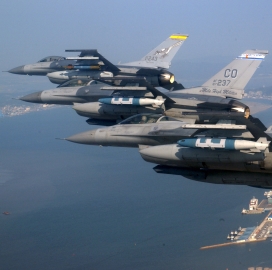 Lockheed Martin‘s Skunk Works business, Calspan, the U.S. Air Force‘s Test Pilot School and the Air Force Research Laboratory have conducted a manned-unmanned teaming exercise in a push to help increase warfighters’ combat efficiency and effectiveness.
Lockheed Martin‘s Skunk Works business, Calspan, the U.S. Air Force‘s Test Pilot School and the Air Force Research Laboratory have conducted a manned-unmanned teaming exercise in a push to help increase warfighters’ combat efficiency and effectiveness.
Lockheed said Monday the Have Raider II demonstration at Edwards Air Force Base involved an experimental F-16 aircraft which acted as a surrogate unmanned combat air vehicle during an air-to-ground strike mission and autonomously reacted to a dynamic threat environment.
Have Raider II was the second in a series of manned/unmanned teaming exercises designed to evaluate enabling technologies.
The two-week drill aimed to demonstrate a capacity to autonomously plan and execute air-to-ground strike missions, as well as react to changing threat environments.
The exercise also showcased a software integration environment built upon the Air Force’s Open Mission Systems architecture.
“The Have Raider II demonstration team pushed the boundaries of autonomous technology and put a fully combat-capable F-16 in increasingly complex situations to test the system’s ability to adapt to a rapidly changing operational environment,” said Shawn Whitcomb, manager of the Loyal Wingman program at Skunk Works.
Michael Coy, a computer engineer at AFRL, noted that the OMS architecture utilized in the Have Raider II demonstration offered a capacity to rapidly insert new software components into the system.




